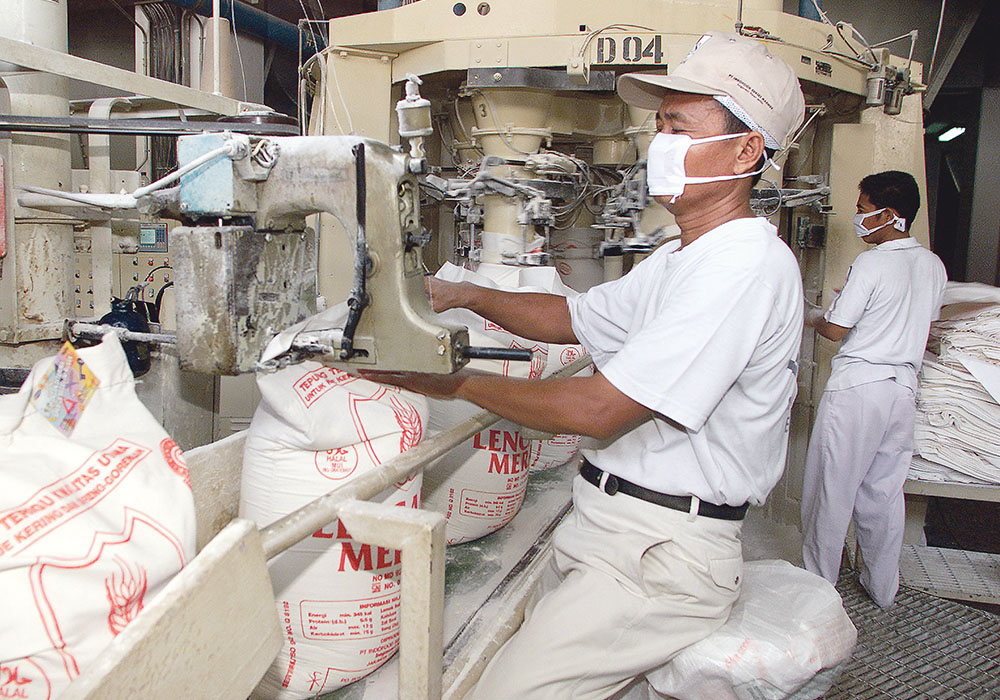The hottest place I have ever been in my life was inside Bogasari Flour Mill’s mammoth plant in Jakarta, Indonesia.
It was 1997 and I was covering a Canadian agricultural trade mission to Indonesia and Japan, led by then federal Agriculture Minister Ralph Goodale.
Situated harbourside with direct access to ocean-going ships, the Bogasari plant was then, and is now, the world’s largest flour mill.
The year before Indonesia had been the fourth largest buyer of Canadian wheat, taking almost 900,000 tonnes and Bogasari had signed a supply agreement with the Canadian Wheat Board to buy between one million and 1.5 million tonnes a year for the next five years.
Read Also

Critical growing season is ahead for soybeans
What the weather turns out to be in the United States is going to have a significant impact on Canadian producers’ prices
So it was an important event for Goodale and CWB representatives to meet Bogasari officials, tour the plant and build relationships.
Jakarta, with close to 10 million people, was experiencing a boom unlike anything I had ever dreamed of. In every direction you looked, dozens of building cranes soared over traffic-clogged streets.
The city sits almost on the equator and so was stifling. Inside the flour mills it was hellishly hot and noisy in the production areas. Wearing jackets and ties, the small media contingent followed Goodale as he toured the grinders, snapping photos at each stop.
It was a blessed relief to step back outside into the refreshing 30 C-plus breeze.
This trip down memory lane was sparked as I read a report by international professional services firm PwC called The World in 2050.
PwC forecasts that emerging markets, including Brazil, China, India, Indonesia, Mexico, Russia and Turkey, will grow about twice as fast as advanced economies. As a result, by 2050 six of the seven largest economies in the world are expected to be from the emerging group.
PwC bases its gross domestic product rankings on purchasing power parity or PPP, not on absolute dollar values.
PPP estimates of GDP adjust for price level differences across countries, providing a better measure of the volume of goods and services produced by an economy.
Under PPP, China is already the world’s leading economy and continues to hold that rank in 2050.
In the PwC forecast, India moves to second place from third, the United States falls from second to third, Indonesia rises to fourth from eighth, Brazil rises to fifth from seventh, Russia holds steady in sixth position and Mexico rises to seventh from eleventh.
Japan, Germany and the United Kingdom will slip down to fill out the bottom rungs of the top 10.
Canada, now occupying the number 17 spot, falls to 22.
Indonesia is already the fourth most populous country with 270 million citizens and definitely a country to watch.
A recent article in World Grain magazine quotes an official with the company that owns Bogasari as saying the country’s flour demand is growing by five percent a year due to population growth and changes in eating habits, particularly among middle and higher income people.
Rice is still the dominant staple at 100 kilograms per person per year but wheat flour consumption has risen to 23 kg per person. They mainly consume wheat in the form of noodles but also in the growing baked goods category.
Bogasari, which has about 50 percent market share, also has been expanding its milling capacity by five percent a year. It has several plants but the world’s biggest one in Jakarta can mill more than four million tonnes a year. That is about the same as all of Canada’s flour mills put together.
Indonesia vies with Egypt for being the world’s largest wheat importer. Given its tropical climate it grows no wheat.
A Western Producer story by Sean Pratt published Feb. 20 looking at the opportunities for selling wheat to a host of South Asian countries noted that Canada exported 2.28 million tonnes in 2019 to Indonesia, valued at $699 million tonnes, making it Canada’s largest single wheat customer. It took about 13 percent of all Canada’s wheat exports.
Overall, Indonesia imports about 11.5 million tonnes of food and feed wheat. Nearby Australia is usually the top source of wheat for Indonesia but it has had three consecutive poor crops, allowing Canada to increase shipments but also opening the door to big increases from Ukraine and Russia.
Indonesia is the world’s largest producer of palm oil and it imports few oilseeds so there is almost no canola trade, but it does buy some Canadian soybeans. It is a predominantly Muslim country and so it imports little pork. It is a cost-conscious beef importer, bringing in water buffalo meat from India and cheap beef from Brazil, but very little from North America. It buys feeder cattle from Australia to finish and slaughter. However, as incomes continue to rise there will be a growing taste for beef generally and the development of niche quality markets.
It buys modest amounts of Canadian barley, durum and canaryseed.
We are going through a period of trade uncertainty around the world.
Canadians know that we must work hard to continue to diversify our markets.
In wheat we have had success with Indonesia and we must continue to build on that and try to interest them in other Canadian agricultural products.
Australia just signed a bilateral trade agreement with Indonesia. Canada does not have one. Canada is a member of the Comprehensive and Progressive Agreement for Trans-Pacific Partnership that includes several Asian countries but not Indonesia.
Canada and the rest of the world are currently preoccupied fighting the COVID-19 virus but in coming years it would be worth the effort to cultivate our trade relationship with Indonesia.

















